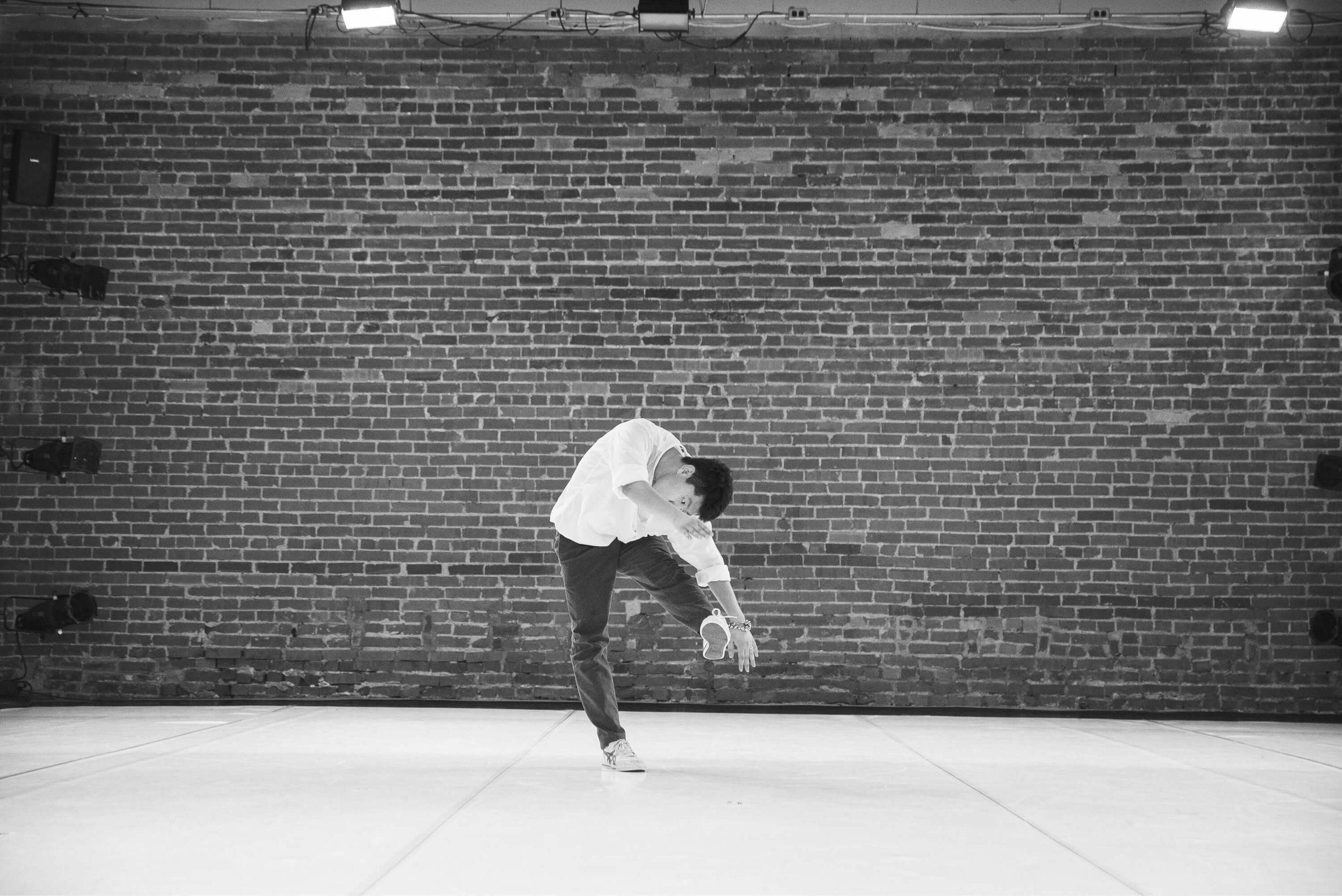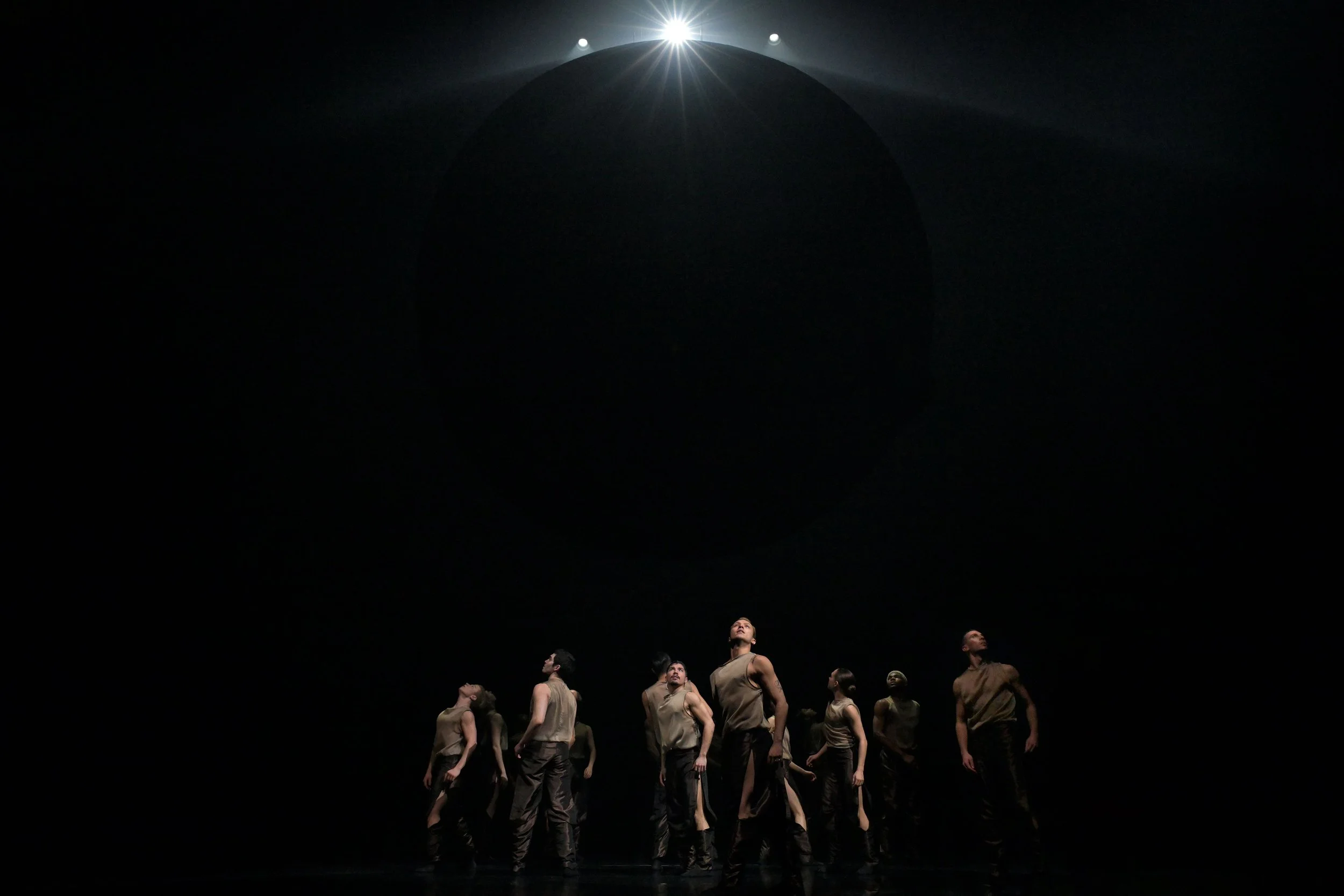Naishi Wang's Taking Breath is a full-body exploration of breathing in a time of climate crisis
Toronto piece is a part of New Work’s one-night-only MERGE mixed program
Naishi Wang channels air through his body in Taking Breath. Photo by Francesca Chudnoff
New Works presents MERGE: Naishi Wang, Nyla Carpentier, Modus Operandi on April 14 at 7:30 pm at the Roundhouse Performance Centre
GROWING UP UNDER smog-choked skies in the northeastern Chinese city of Changchun, Naishi Wang was never someone who took clean air, and breathing, for granted. “There was lots of pollution because my city is an industrial city famous for creating cars,” the Toronto dance artist explains over the phone to Stir.
But after years of training in Chinese classical dances and ballet, he moved to Canada at 15, going on to perform with Toronto Dance Theatre and becoming a choreographer—and he breathed easier.
Then, he saw a news article about a Canadian startup that was selling canned clean air to the Chinese. The absurdity of the story, and its implications around climate change, drove him into the studio in 2018 to create Taking Breath—an intense solo for himself that turns respiration into a rhythmic act of communication, resistance, and resilience. It makes its debut here on the one-night-only MERGE program, which in itself is a breath of fresh air for both New Works and the dance scene, but more on that later.
In the studio, Wang began exploring questions around what it would be like to breathe too little or too much—and how that would affect his movements and thoughts. “I discovered there are only four ways to breath: in-in, out-in, in-out, out-out,” he explains. “There are no other ways to breathe, and because of that, this is a kind of work where I have to be as honest as possible, with no tricks. I began to erase all the unnecessary parts, like music: I realized I can make rhythms in breath.”
There were some mishaps along the way, as Wang pushed the extremes of his breath. “I fainted—for three or four seconds I was completely unconscious,” he recalls, adding that one-time experience influenced the direction of the work. “To be out of breath feels like dying, and I started to ask, ‘How can we reconnect breathing with life?’
“I learned how to do this in a safe way, not pushing myself to be in a harming place,” he continues. “Sound and breathing became a way to communicate with others—we not only breathe alone but it can be a way to be heard, with pitch and voice and screaming.”
For an idea of the alternately unearthly and primal vocalizations Wang works with his breath and body, see the trailer below. He acknowledges the pandemic brought even more interpretations to the piece, at a time when the air around us, and respiration itself, became life-threatening. Still, he hopes to transcend that reading of Taking Breath, which ended up being nominated for a Toronto Dora Mavor Moore Award for Outstanding Performance back in 2018.
“I also had this fear as a Chinese guy standing on a stage and breathing,” he says of the COVID era and anti-Asian racism that reared its head at the time. “But of course this work is not about that. I feel this work is about giving love, and I hope breathing is safe and not seen as a disease anymore….As a creator I try to hold what I first created.”
The chance to see the short piece is a result of shifts at New Works, the local company best known for its culturally diverse All Over the Map summer series, presented for free outdoors on Granville Island each year. Program director Amber Barton, the well-known Vancouver dance artist who ran the company the response. from 2008 to 2021, says the mixed bill is one of the initiatives that have come out of a new Presentation Advisory Committee aimed at reflecting the diversity of the community. Barton adds that MERGE also rose out of a desire to support more emerging choreographers, build bridges amid the dance community, and start to present out-of-province artists again.
“It’s so very hard for artists to travel across the country and show their work–sometimes it's cheaper to go to Europe,” reflects Barton, sharing the same call as Wang. “There’s so much we have to learn from each other from our own country.” While here, Wang will be teaching classes at Modus Operandi, and creating a new commission for Alvin Tolentino's Co.ERASGA—a multidancer piece that, Wang reveals, also explores themes of climate change.
The aptly named MERGE mixed program also features Tahltan and Kaska First Nations artist Nyla Carpentier with a new work expanding on her contemporary powwow practice, plus student dancers from Vancouver’s Modus Operandi performing excerpts of works by artistic directors Tiffany Tregarthen and David Raymond.
“We invited those dancers to warm up the space and be around professional performers,” Barton says of the MO team. “Myself, personally, I learned the most as a young dancer when I was surrounded by professionals. Everybody wins in terms of exchange and community.”
“There are lots of opportunities sparking from this invitation for me to travel to Vancouver and present a piece that was my first time outside Toronto Dance Theatre performing my own work,” Wang says.
MERGE is one of many new initiatives to come that showcase more up-and-coming talent from here and across the country—all in a short-but-sweet form. “I love the range of styles and sensitivities and artistry that are wrapped up in the show,” Barton adds. “And there’s something cool when there's only one show: I feel it brings dance back to that very ephemeral place–that bittersweet thing about dance that happens in that moment.”














